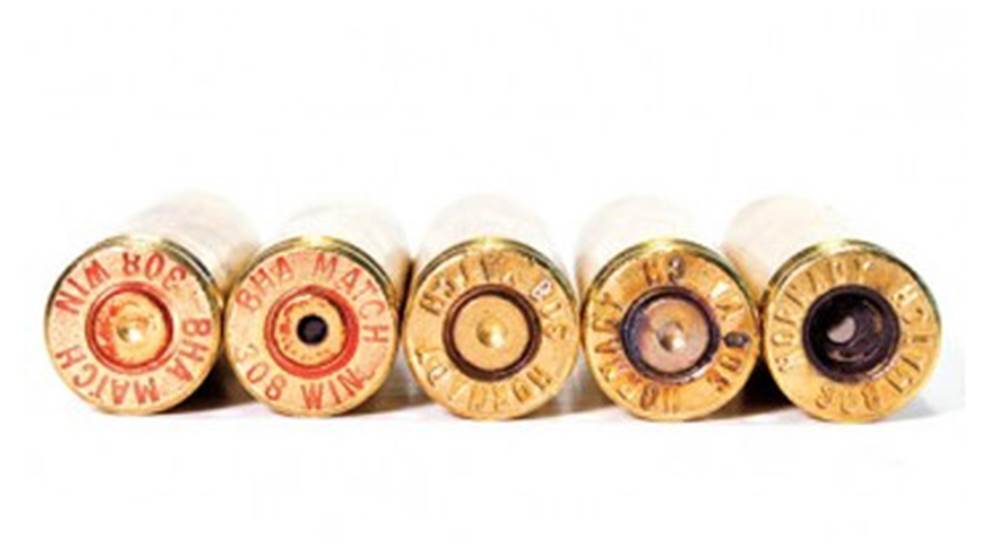The Best Strategy To Use For Cci Primers
Table of ContentsPrimers In Stock - An OverviewWhat Does Cci Primers Do?Little Known Facts About Primers For Sale.The Definitive Guide for Rifle PrimersFederal Primers Things To Know Before You Get This
Part of the gun cartridge for launching propellant combustion In weapons as well as weapons, the guide () is the chemical and/or device in charge of launching the propellant burning that will certainly press the projectiles out of the weapon barrel. In very early black powder guns such as muzzleloaders, the primer was essentially the exact same chemical as the primary propellant (albeit typically in a finer-powdered kind), but poured into an external flash frying pan, where it could be sparked by an ignition source such as a slow suit or a flintlock though some muzzleloaders have guides like cap weapon caps. remington primers.
In artillery the guides are often a different component, put inside the barrel to the rear of the primary propellant chargebut there are various other examples of weapons, consisting of for example some automated weapons, developed to fire cartridges with important electrical primers.
The Main Principles Of Primers In Stock

This opening was full of carefully ground powder, which was then ignited with a hot coal or lantern. With the advent of hand-held weapons, this came to be an unwanted way of firing a weapon. Holding a burning stick while attempting to put a fee of black powder meticulously down a barrel is unsafe, as well as trying to hold the weapon with one hand while at the same time aiming at the target as well as searching for the touchhole makes it very hard to fire precisely. [] The initial effort to make the process of shooting a tiny arm easier was the "matchlock".
, and dried. After the gun was loaded and also the touchhole primed with powder, the burning idea of the suit was placed so that the lock would certainly bring it into call with the touchhole.
Everything about Cci Primers
This brought the match down to the touchhole, stiring up the powder - https://relodprim3rs.livejournal.com/profile. With mindful attention, the slow-burning match could be maintained burning for long periods of time, as well as the use of the lock device made rather accurate fire feasible. The following transformation in ignition technology was the "wheel-lock".
The protected flashpan also provided some capacity to endure bad weather. federal primers. Wind, rain, as well as wet climate would certainly provide a matchlock worthless, but a wheel-lock that was loaded and also waterproofed with a little bit of grease around the flashpan could be fired under many conditions. The wheel-lock appreciated only a quick duration of appeal before being superseded by a simpler, extra durable design.
The Main Principles Of Reloading Primers
As the name indicates, the flintlock used flint rather than iron pyrite. The flint was held in a spring-loaded arm, called the "cock" from the similarity of its activity to a pecking hen. The cock revolved through around a 90-degree arc and also was held in the tensioned, or "cocked" position by a trigger. https://packersmovers.activeboard.com/t68841033/relodprim3rs/?page=last#lastPostAnchor.
The "half-cock" placement held the dick halfway back, and also used a deep notch to ensure that shooting would not launch the penis. Half-cock was a safety and security setting, utilized when filling, keeping or carrying a packed flintlock. The "full-cock" position held the dick completely back as well as was the placement where the gun was terminated.
It acted as both a flashpan cover and a steel striking surface for the flint. The frizzen was pivoted as well as spring-loaded to ensure that it would secure the open or closed setting. When closed, the striking surface area was placed to ensure that the flint would strike at the proper angle to generate a stimulate.
The 8-Second Trick For Reloading Primers
The flintlock system was easier and stronger than the wheel-lock, as well as the flint and steel supplied a great, reputable source of ignition. The flintlock stayed in military solution for over 200 years, as well as flintlocks are still made today for historic re-enactments and muzzle-loading target competitors, as well as for seekers that appreciate the extra difficulty that the flintlock provides.
By the middle of the 19th century, the percussion or index caplock system was well established., as it was easier and a lot more dependable than the flintlock.
The flashpan as well as frizzen were eliminated as well as replaced by a small, hollow horizontal cyndrical tube (drum) screwed right into the bored-out as well as tapped flash hole and lugging a "nipple area" over which the cap could be fitted. A "hammer" which also had half-cock (for loading and applying the cap) and also full-cock positions replaced the dick.